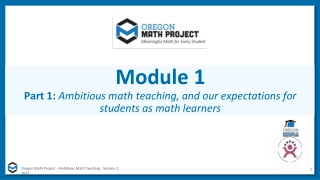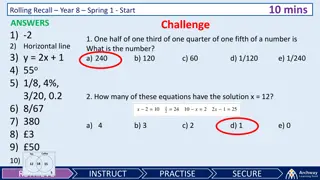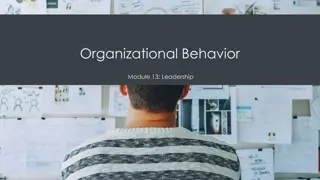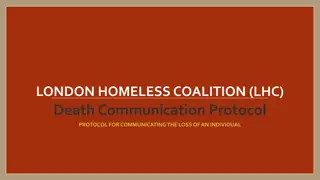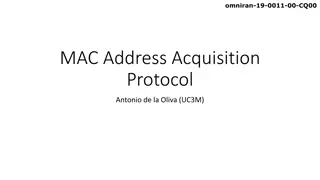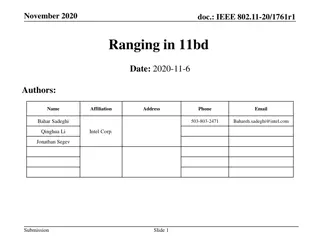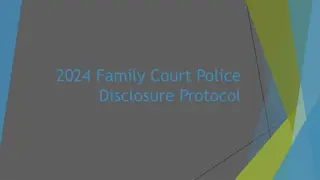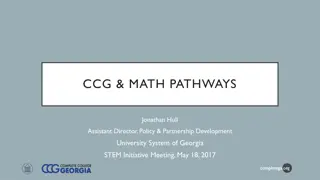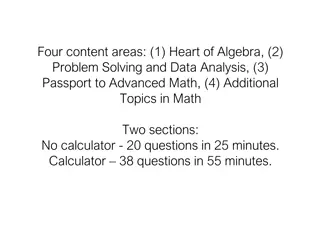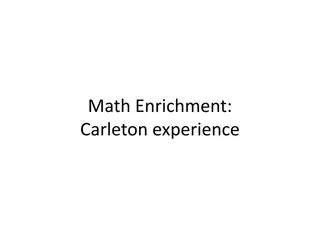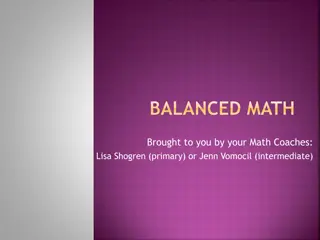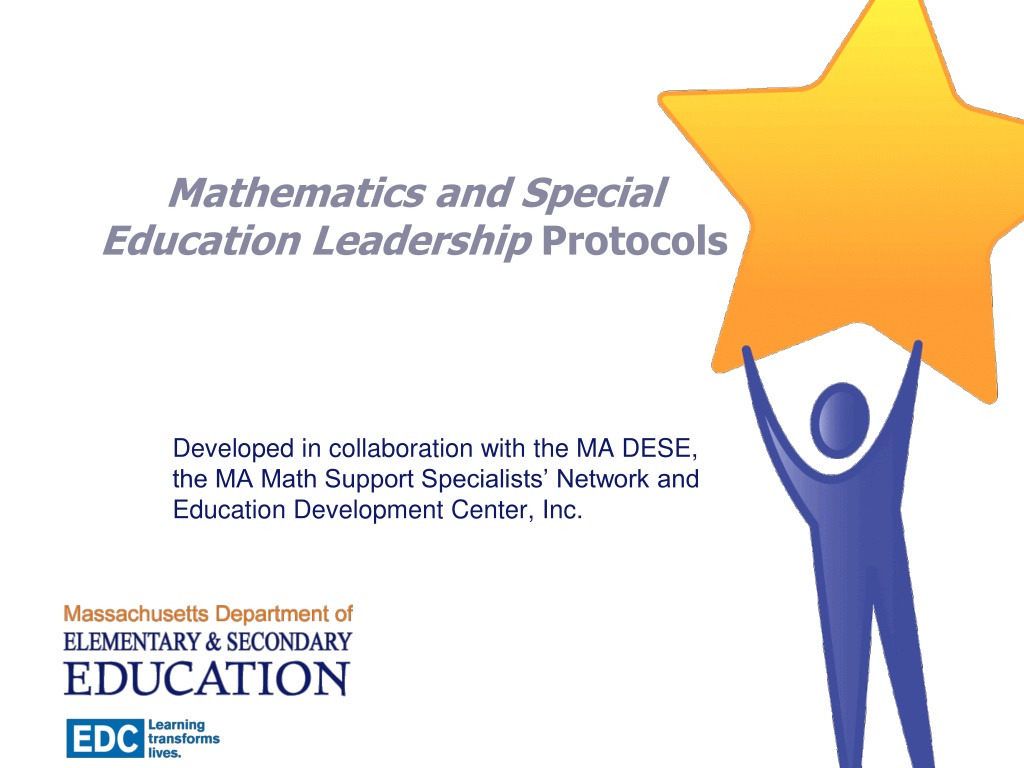
Leadership Protocols for Mathematics and Special Education Collaboration
Explore Mathematics and Special Education Leadership Protocols developed in collaboration with MA DESE and other educational networks to enhance instruction for students with disabilities. The protocols focus on shared beliefs, essential understandings, and aligning barriers and strategies to ensure all learners' needs are met effectively.
Download Presentation

Please find below an Image/Link to download the presentation.
The content on the website is provided AS IS for your information and personal use only. It may not be sold, licensed, or shared on other websites without obtaining consent from the author. Download presentation by click this link. If you encounter any issues during the download, it is possible that the publisher has removed the file from their server.
E N D
Presentation Transcript
Mathematics and Special Education Leadership Protocols Developed in collaboration with the MA DESE, the MA Math Support Specialists Network and Education Development Center, Inc.
Acknowledging the Team Who s here? What is each person s role? What does each person hope to bring to this team s work? 2 Massachusetts Department of Elementary and Secondary Education
Overview of the Protocols Take a few minutes to read or review pages 1-3 of the Prologue document. This important information provides context for the protocols. Premise of the protocols By focusing on students with disabilities when planning math instruction, educators will be better able to address the needs of all learners. 3 Massachusetts Department of Elementary and Secondary Education
Connections to Multi-Tiered System of Supports (MTSS): The Protocols... Promote an understanding of both mathematics and the variability of learners Build shared responsibility, collaboration and leadership Model strong, universally designed core instruction in mathematics (Tier 1) using multiple accessibility strategies 4 Massachusetts Department of Elementary and Secondary Education
Mathematics and Special Education Leadership Protocols Protocol 1: Shared Beliefs About Mathematics Instruction for Students with Disabilities
Todays Work with the Protocols 1: Shared Beliefs About Mathematics Instruction for Students with Disabilities 2: Essential Understandings About Students with Disabilities 3: Essential Understandings About Rigorous Mathematics Instruction 4: Aligning Barriers and Strategies 5: Responding to a Range of Learning Needs 6 Massachusetts Department of Elementary and Secondary Education
Protocol 1 Goals To identify both the team s shared and differing beliefs about math instruction for students with disabilities; To use those areas of shared beliefs and differences to fuel discussion within the team that leads to greater understanding and agreement among the team about expectations in mathematics instruction for students with disabilities. 7 Massachusetts Department of Elementary and Secondary Education
Agenda Getting started Complete the Beliefs Inventory Tally and discuss results Individual reflect-and-write Next steps 8 Massachusetts Department of Elementary and Secondary Education
The Beliefs Inventory Think about a classroom of students For each statement, circle either: A (Agree) D (Disagree) ? (Not sure) 9 Massachusetts Department of Elementary and Secondary Education
The Beliefs Inventory Re-read each question, thinking specifically about students with disabilities Write A, D or ? in the right-hand column. 10 Massachusetts Department of Elementary and Secondary Education
The Beliefs Inventory Which beliefs appear to be mostly shared? What are the points of disagreement? Are there any surprises? What are the underlying assumptions behind our points of disagreement? Do we have different beliefs for students with and without disabilities? If so, why? How can we reconcile our differences? 11 Massachusetts Department of Elementary and Secondary Education
Write and Reflect What are some important ideas from today that you want to note for yourself? 12 Massachusetts Department of Elementary and Secondary Education
Wrap-Up Summarize and list any outstanding questions that have not been answered yet and that are still under discussion. Review any parking lot questions Any To-Do items for next meeting Review the purpose of next meeting. 13 Clarify date, time and location of next meeting. Massachusetts Department of Elementary and Secondary Education
Next Time #1 Shared Beliefs About Math Instruction for Students with Disabilities #2 Essential Understandings About Students with Disabilities #3 Essential Understandings About Rigorous Mathematics Instruction #4 Aligning Barriers and Strategies #5 Responding to a Range of Learning Needs 14 Massachusetts Department of Elementary and Secondary Education


